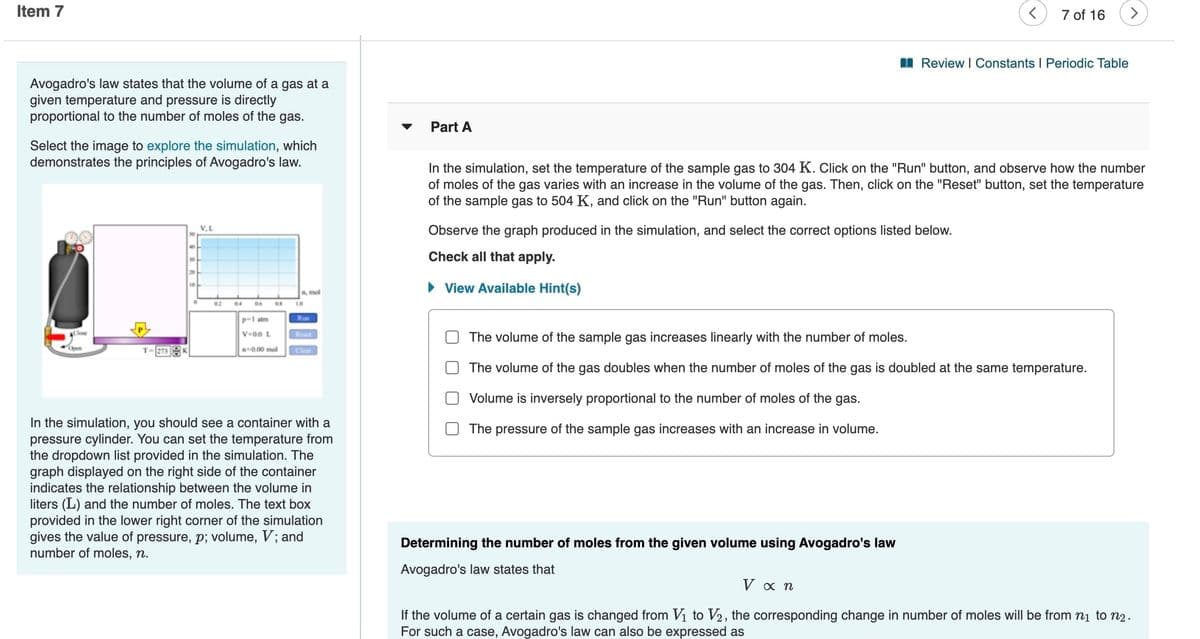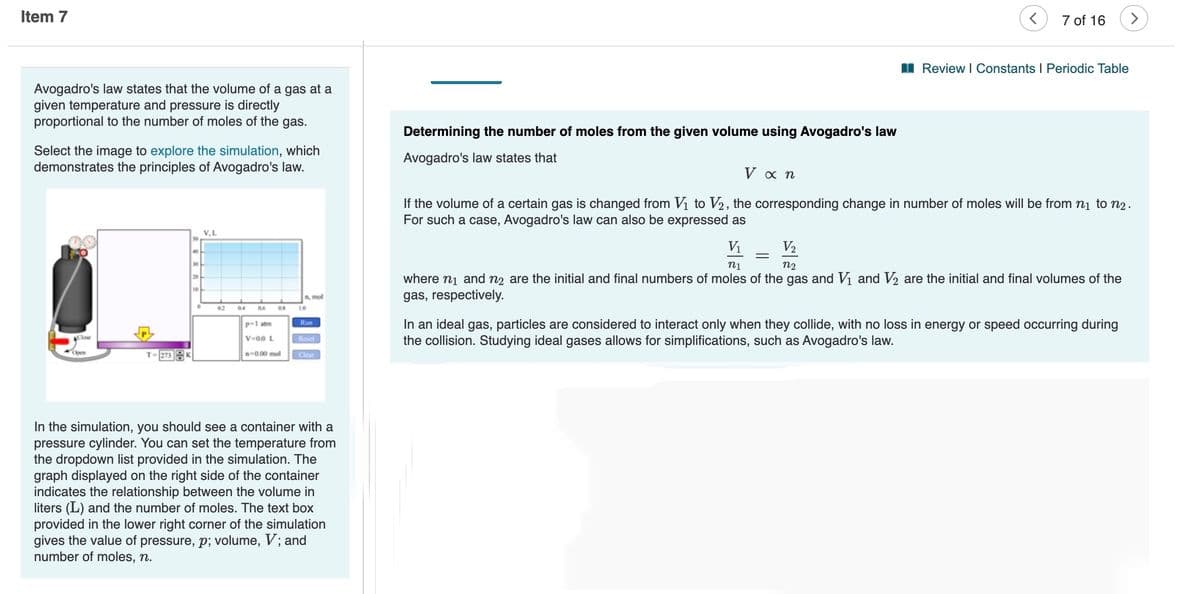I Review I Constants I Periodic Table Avogadro's law states that the volume of a gas at a given temperature and pressure is directly proportional to the number of moles of the gas. Part A Select the image to explore the simulation, which demonstrates the principles of Avogadro's law. In the simulation, set the temperature of the sample gas to 304 K. Click on the "Run" button, and observe how the number of moles of the gas varies with an increase in the volume of the gas. Then, click on the "Reset" button, set the temperature of the sample gas to 504 K, and click on the "Run" button again. Observe the graph produced in the simulation, and select the correct options listed below. Check all that apply. > View Available Hint(s) The volume of the sample gas increases linearly with the number of moles. T-E 000 O The volume of the gas doubles when the number of moles of the gas is doubled at the same temperature. O Volume is inversely proportional to the number of moles of the gas. In the simulation, you should see a container with a pressure cylinder. You can set the temperature from the dropdown list provided in the simulation. The graph displayed on the right side of the container indicates the relationship between the volume in liters (L) and the number of moles. The text box provided in the lower right corner of the simulation gives the value of pressure, p; volume, V; and number of moles, n. O The pressure of the sample gas increases with an increase in volume. Determining the number of moles from the given volume using Avogadro's law Avogadro's law states that
Ideal and Real Gases
Ideal gases obey conditions of the general gas laws under all states of pressure and temperature. Ideal gases are also named perfect gases. The attributes of ideal gases are as follows,
Gas Laws
Gas laws describe the ways in which volume, temperature, pressure, and other conditions correlate when matter is in a gaseous state. The very first observations about the physical properties of gases was made by Robert Boyle in 1662. Later discoveries were made by Charles, Gay-Lussac, Avogadro, and others. Eventually, these observations were combined to produce the ideal gas law.
Gaseous State
It is well known that matter exists in different forms in our surroundings. There are five known states of matter, such as solids, gases, liquids, plasma and Bose-Einstein condensate. The last two are known newly in the recent days. Thus, the detailed forms of matter studied are solids, gases and liquids. The best example of a substance that is present in different states is water. It is solid ice, gaseous vapor or steam and liquid water depending on the temperature and pressure conditions. This is due to the difference in the intermolecular forces and distances. The occurrence of three different phases is due to the difference in the two major forces, the force which tends to tightly hold molecules i.e., forces of attraction and the disruptive forces obtained from the thermal energy of molecules.


Trending now
This is a popular solution!
Step by step
Solved in 2 steps with 2 images









